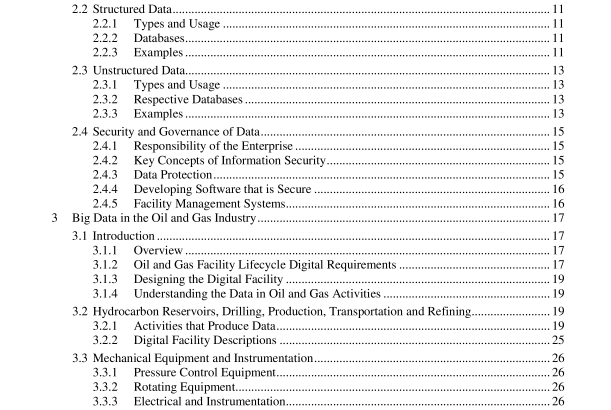ASME STB-1-2020 pdf free download.Guideline on Big Data/Digital Transformation Workflows and Applications for the Oil and Gas Industry
This guideline explains the current use and application of data analytics and data science in the oil and gas industry. It is designed to provide guidance on how to utilize data analytics and machine learning/artificial intelligence (ML/AI) to address a given business need, resulting in value-creation. Within the guidelines will be descriptions of various data analytics techniques and the recommended tools for the respective techniques.
1.1.1 How to Use This Guideline
(a) Basics This document is designed as both a “how-to” and a reference document. The chapters are arranged in a building block sequence that parallels the journey of a business data project. These building blocks should help provide a roadmap to data-driven projects. Each chapter is also a standalone reference for its respective topic. The reader can reference these individual chapters as needed to fill gaps in his or her understanding of either data techniques or oil and gas.
(b) Chapters In this first chapter, the user is introduced to definitions and acronyms common to both oil and gas and to the data analytics strategies highlighted in this guide. Chapter 2 provides background to the various types of data in the oil and gas industry, including how they are curated, described, used, and safeguarded. Chapter 3 describes the Digital Facility and the related oil and gas activities and operations that produce data. It also defines the types of data produced by each operation and potential applications for data- driven insights. Chapter 4 explores the types of data analytics tools available to a data project leader and how they can be utilized. This chapter is where the user can find information about topics such as regression models, classification, machine learning, optimization, and data visualization. Chapter 5 is a description of a full data project. The user will learn how to structure a project, assemble the appropriate team resources, frame the questions to be answered, model and execute the project, and usefully deploy the resulting model.
Two sets of Appendices are included for references and details that supplement the discussions of the chapters. The Mandatory Appendices are presented to help understand data projects and the team members required to execute them. Nonmandatory Appendices are included to provide the user with additional definitions, sample case studies as examples, and a description of relevant certifications available if the reader wishes to increase his or her knowledge and proficiency in data analytics.
2 DATA STRUCTURE AND MANAGEMENT
2.1 Introduction This chapter provides an overview of structured and unstructured data and the respective databases used in the oil and gas industry. Understanding the types and their usage is a critical and key component to properly executed data analytics projects. Data should ideally be accessed, securely stored, verified and validated.
2.2 Structured Data
2.2.1 Types and Usage Structured data is the most recognizable form of data for technical and business professionals. It is made up of alpha-numeric characters and usually accessed and stored in tables and matrices of rows and columns. Structured data may be used for descriptive, predictive and prescriptive analytical techniques as described in Chapter 4.
2.2.2 Databases (a) Relational Relational Databases, managed by software programs called Relational Database Management Systems (RDBMS), contain digital data in rows and columns, or tables. They are characterized by Index and Key variables used to join one or more similar databases. Each row is called a record and each column is a variable or attribute. All data is stored among tables based on relations. Examples of relational databases include address books, accounts payable, and oil well production reports. Examples of RDBMS programs are Oracle Database, MySQL, Microsoft SQL, Excel Spreadsheets, Microsoft Access, and IBM DB2. (b) Object-Oriented Object-Oriented Databases are managed by software programs called Object Oriented Database Management Systems (ODBMS). They are organized by objects that have Structure, Classes and Identities.ASME STB-1 pdf download.ASME STB-1-2020 pdf free download
